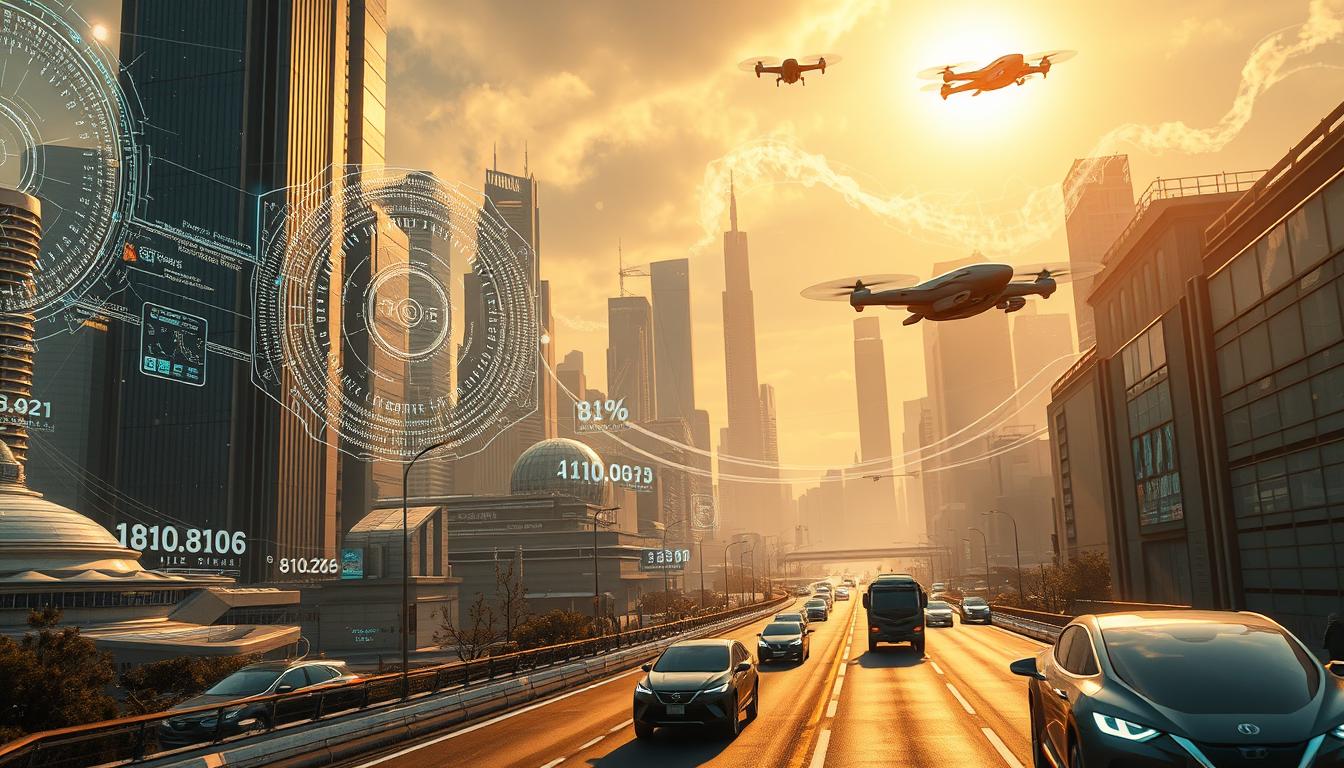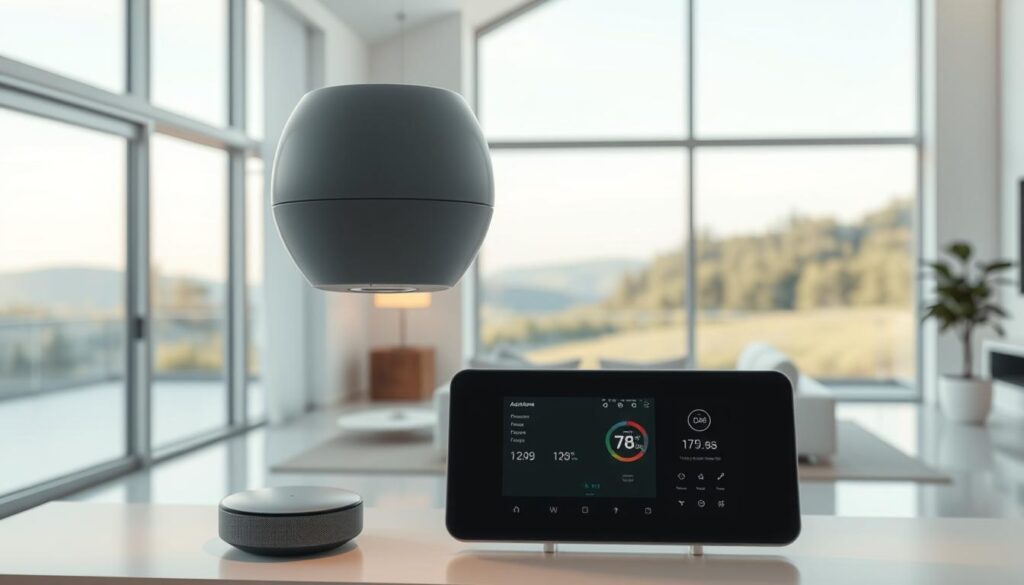Blog
How Artificial Intelligence Is Changing Our Everyday Lives

Artificial Intelligence (AI) is no longer a concept of science fiction; it’s a reality that surrounds us, transforming our daily routines and interactions with technology.
From smart homes that adjust temperature and lighting based on our preferences to personalized recommendations on streaming services, AI-driven innovation is making our lives more convenient, efficient, and enjoyable.
As we continue to embrace technological advancements, it’s clear that AI will play an increasingly significant role in shaping our future, from improving healthcare outcomes to enhancing customer service experiences.
Key Takeaways
- AI is transforming daily routines with smart technology.
- Personalized recommendations are driven by AI algorithms.
- AI is enhancing customer service experiences.
- Technological innovation is improving healthcare outcomes.
- AI is making our lives more convenient and efficient.
The Evolution of AI Technology
The evolution of AI is a testament to human ingenuity, with advancements in technology paving the way for AI to become an indispensable part of modern life. Over the years, AI has transitioned from being a subject of science fiction to a household reality, transforming the way we live and interact.
From Science Fiction to Household Reality
The journey of AI began decades ago, with early concepts and prototypes laying the groundwork for today’s sophisticated systems. Key milestones in AI development have marked significant progress, from the creation of the first AI programs to the development of machine learning algorithms that enable machines to learn from data.
Key Milestones in AI Development
- The development of the first AI programs in the 1950s, which could perform tasks such as playing chess and solving mathematical problems.
- The introduction of machine learning in the 1980s, allowing machines to learn from data and improve their performance over time.
- The rise of deep learning in the 21st century, which has enabled AI systems to achieve complex tasks such as image and speech recognition.
The Technological Breakthroughs That Made AI Accessible
Technological breakthroughs have played a crucial role in making AI accessible to a wider audience. Advances in computing power, data storage, and the development of open-source AI frameworks have democratized access to AI technology, enabling businesses and individuals to integrate AI into their daily lives.
The Acceleration of AI Innovation
The acceleration of AI innovation has been significantly driven by advancements in machine learning. This subset of AI enables machines to learn from data, improving their performance over time without being explicitly programmed.
How Machine Learning Changed Everything
Machine learning has been a game-changer in the field of AI, allowing for the development of intelligent systems that can adapt to new data and situations. This has opened up new possibilities for AI applications, from personalized recommendations to autonomous vehicles.
AI in Daily Life: The Invisible Revolution
As technology advances, AI is becoming increasingly intertwined with our daily routines. This integration is not just about the adoption of new gadgets; it’s about how AI is reshaping our interactions, decisions, and lifestyles.
The Omnipresence of AI in American Households
AI has become a staple in many American homes, often operating in the background to make our lives easier. From smart thermostats that adjust the temperature based on our preferences to AI-powered virtual assistants that manage our schedules, the presence of AI is ubiquitous.
Statistics on AI Adoption in the United States
| Device | Percentage of Households |
|---|---|
| Smart Speakers | 75% |
| Smart Thermostats | 40% |
| AI-Powered Security Systems | 30% |
According to recent statistics, a significant majority of households in the United States have adopted some form of AI technology. This widespread adoption underscores the growing reliance on AI for daily convenience and efficiency.
How We Interact with AI Without Realizing It
Our interactions with AI are often subtle, woven into the fabric of our daily activities. For instance, when we use a navigation app to find the quickest route to work, we’re interacting with AI. Similarly, when we receive personalized product recommendations online, AI is at work.
The Subtle Ways AI Shapes Our Decisions
AI influences our decisions in various ways, sometimes without us even realizing it. For example, AI-driven algorithms on social media platforms curate content that can shape our opinions and preferences. As MIT Technology Review notes, “AI is not just a tool; it’s a partner in our decision-making process.”
“AI is changing the way we live, work, and interact with each other. It’s making our lives more convenient, more efficient, and more connected.”
From Luxury to Necessity: The Changing Perception
The perception of AI has shifted dramatically over the years. What was once considered a luxury is now seen as a necessity. As AI continues to evolve and improve, it’s likely that this trend will continue, with AI becoming even more integral to our daily lives.
In conclusion, AI’s role in daily life is multifaceted and profound. As we continue to embrace AI technology, it’s essential to understand its implications and harness its potential to create a better future.
Smart Homes: Living with AI Assistants
The rise of AI assistants is making smart homes a norm, enhancing our living experiences. With the integration of AI technology, households are becoming more efficient, convenient, and automated.
Virtual Assistants as Household Members
Virtual assistants like Amazon Alexa, Google Assistant, and Apple Siri are now common in many homes. They’ve become integral to our daily routines, from setting reminders to controlling other smart devices.
Amazon Alexa, Google Assistant, and Apple Siri
Each of these virtual assistants has its unique features and capabilities. For instance, Amazon Alexa is known for its compatibility with a wide range of smart devices, while Google Assistant excels in providing accurate information due to its robust search capabilities. Apple Siri, on the other hand, offers a seamless experience for Apple device users.
Smart Devices and Interconnected Living
The true potential of smart homes lies in the interconnectedness of various devices. This includes thermostats, lighting systems, and security cameras, all of which can be controlled and monitored remotely through AI assistants.
Thermostats, Lighting, and Security Systems
Smart thermostats learn your temperature preferences and adjust accordingly, optimizing energy consumption. Smart lighting can be programmed to simulate occupancy when you’re away, enhancing home security. Meanwhile, smart security systems provide real-time monitoring and alerts, ensuring your home is always secure.

Energy Efficiency and Automation
One of the significant benefits of smart homes is the potential for energy efficiency. AI optimizes resource management by learning your habits and preferences.
How AI Optimizes Home Resource Management
AI analyzes your usage patterns to minimize waste. For example, it can turn off lights and appliances when not in use, or adjust the heating and cooling based on the time of day and your schedule. This not only reduces energy consumption but also lowers utility bills.
In conclusion, the integration of AI assistants and smart devices is transforming our living spaces into more efficient, convenient, and automated environments. As AI technology continues to evolve, we can expect even more innovative solutions for smart homes.
Communication Reimagined Through AI
AI technology is redefining the landscape of communication, breaking barriers and fostering global connections. This transformation is multifaceted, touching various aspects of how we interact.
Language Processing and Translation
One of the significant advancements in AI is in language processing and translation. AI-powered translation tools are becoming increasingly sophisticated, allowing for more accurate and nuanced translations.
Breaking Down Global Communication Barriers
These tools are breaking down global communication barriers, enabling people who speak different languages to communicate effectively. This has profound implications for global business, education, and personal relationships.
Predictive Text and Smart Replies
AI is also enhancing our communication through predictive text and smart replies. These features, integrated into our smartphones and other devices, use AI to predict what we’re likely to say next.
How AI Completes Your Thoughts
This not only speeds up our communication but also makes it more efficient, reducing the need to type out entire messages. AI is learning to understand the context and nuances of our language, making these predictions more accurate over time.
Social Media Algorithms
Furthermore, AI is playing a crucial role in shaping our social media experiences through personalized algorithms. These algorithms analyze our interactions and preferences to curate content feeds that are relevant to us.
The Personalization of Content Feeds
The personalization of content feeds is a double-edged sword. On one hand, it enhances user experience by showing us content we’re likely to engage with. On the other hand, it raises concerns about echo chambers and the potential for misinformation.
Transportation and Mobility Revolution
Artificial intelligence is revolutionizing transportation, from autonomous vehicles to smart navigation systems. The transportation sector is undergoing a significant transformation, driven by advancements in AI and automation technology.
Autonomous Vehicles and Driver Assistance
The development of autonomous vehicles is one of the most significant applications of AI in transportation. Companies like Tesla and Waymo are at the forefront of this innovation.
Tesla, Waymo, and the Future of Driving
Tesla’s Autopilot and Waymo’s self-driving technology are pushing the boundaries of what’s possible in transportation. As Elon Musk once said, “Autonomous driving is not just a feature, it’s a necessity for the future of transportation.”
The future of driving is expected to be safer and more efficient, with AI handling complex tasks and reducing human error.
AI-Powered Navigation Systems
AI is also enhancing navigation systems, making them more accurate and efficient. These systems can predict traffic patterns and optimize routes in real-time.
Traffic Prediction and Route Optimization
By analyzing real-time data, AI-powered navigation systems can predict traffic congestion and suggest alternative routes. This not only saves time but also reduces fuel consumption.
“The integration of AI in navigation is a game-changer for transportation,” notes a transportation expert.
Ride-Sharing and Transportation Services
AI is also transforming ride-sharing services by improving the matching of drivers and passengers. This results in faster pickups and a more efficient service.
How AI Matches Drivers and Passengers
AI algorithms analyze various factors, including location, traffic, and time of day, to optimize the ride-sharing experience. This ensures that both drivers and passengers benefit from the service.
As the transportation industry continues to evolve, the role of AI will become increasingly prominent. With its ability to enhance safety, efficiency, and convenience, AI is set to revolutionize the way we travel.
Healthcare Transformed by AI Innovation
Healthcare is being transformed by AI, leading to improved patient outcomes and more precise medical interventions. This transformation is multifaceted, involving various aspects of healthcare delivery.
Personalized Medicine and Treatment Plans
AI is revolutionizing personalized medicine by analyzing vast amounts of patient data to create tailored treatment plans. AI analysis of patient data enables healthcare providers to identify patterns and predict patient responses to different treatments.
AI Analysis of Patient Data
By leveraging machine learning algorithms, AI can process complex patient data, including genetic information, medical history, and lifestyle factors. This analysis helps in developing targeted therapies that are more effective and have fewer side effects.
| Benefits of AI in Personalized Medicine | Description |
|---|---|
| Tailored Treatment Plans | AI helps create personalized treatment plans based on individual patient data. |
| Predictive Analytics | AI analyzes patient data to predict disease progression and treatment outcomes. |
| Enhanced Patient Care | AI-driven insights enable healthcare providers to offer more effective care. |
Wearable Health Technology
Wearable health technology is another area where AI is making a significant impact. Continuous monitoring and early warning systems are being developed to track patient health in real-time.
Continuous Monitoring and Early Warning Systems
AI-powered wearables can monitor vital signs and detect anomalies, providing early warnings for potential health issues. This capability is particularly beneficial for managing chronic conditions and preventing hospital readmissions.

Medical Diagnostics and Imaging
AI is also enhancing medical diagnostics and imaging. AI assists doctors in disease detection by analyzing medical images with high precision.
How AI Assists Doctors in Disease Detection
AI algorithms can process medical images, such as X-rays and MRIs, to identify abnormalities that may be missed by human clinicians. This assistance improves diagnostic accuracy and speeds up the detection process.
In conclusion, AI innovation is transforming healthcare by enabling personalized medicine, advancing wearable health technology, and enhancing medical diagnostics. As AI continues to evolve, its impact on healthcare is expected to grow, leading to better patient outcomes and more efficient healthcare delivery.
Workplace Automation and Productivity
AI is transforming the modern workplace by automating routine tasks and enhancing decision-making capabilities. This transformation is not just about replacing human effort with machines; it’s about augmenting human capabilities to achieve more efficient and effective outcomes.
AI-Enhanced Office Applications
AI is being integrated into various office applications to streamline tasks and improve productivity. From automating data entry to managing complex project workflows, AI-enhanced tools are making a significant impact.
From Email Sorting to Meeting Scheduling
AI-powered virtual assistants can sort emails, schedule meetings, and even prepare responses to routine inquiries. This not only saves time but also reduces the workload on employees, allowing them to focus on more strategic tasks.
Customer Service and Chatbots
The use of chatbots for customer service is becoming increasingly prevalent. These AI-driven systems can provide 24/7 support, answering customer queries, and helping to resolve issues promptly.
24/7 Support Without Human Limitations
Unlike human customer support agents, chatbots don’t require breaks, can handle multiple queries simultaneously, and are available around the clock. This significantly enhances customer satisfaction and reduces operational costs for businesses.
Data Analysis and Decision Making
AI’s ability to process vast amounts of data quickly and accurately is revolutionizing how businesses make decisions. By analyzing trends, predicting outcomes, and identifying patterns, AI helps businesses make informed decisions faster.
How AI Processes Information Faster Than Humans
AI systems can analyze data at speeds unattainable by humans, providing insights that would take humans significantly longer to uncover. This capability is particularly valuable in fast-paced business environments where timely decisions are crucial.
| AI Application | Benefits | Impact on Productivity |
|---|---|---|
| AI-Enhanced Office Tools | Streamlines tasks, automates routine work | High |
| Customer Service Chatbots | Provides 24/7 support, reduces response time | Medium to High |
| Data Analysis and Decision Making | Enhances decision-making speed and accuracy | High |
Entertainment and Media in the AI Age
The integration of AI in entertainment has opened new avenues for content creation. AI is transforming the entertainment and media industry in various ways, from how we consume content to how it is produced.
Personalized Content Recommendations
One of the most significant impacts of AI in entertainment is the personalization of content recommendations. Services like Netflix, Spotify, and YouTube use complex algorithms to suggest content based on user behavior and preferences.
Netflix, Spotify, and YouTube Algorithms
These platforms employ sophisticated AI-driven algorithms to analyze user data, providing tailored recommendations that enhance user experience. For instance, Netflix’s recommendation engine is responsible for 80% of user viewing activity.
Gaming and Interactive Experiences
AI is also revolutionizing the gaming industry by creating more immersive and interactive experiences. AI opponents and procedurally generated worlds are making games more engaging.
AI Opponents and Procedurally Generated Worlds
Games now feature AI-driven opponents that adapt to a player’s skill level, providing a more challenging experience. Additionally, procedurally generated worlds ensure that no two gameplay experiences are the same, enhancing replayability.
Creative AI: Music, Art, and Writing
AI is not just limited to consuming content; it’s also being used to create it. From AI-generated music to art and writing, the possibilities are expanding.
When Machines Become Artists
AI algorithms can now generate creative content, such as music compositions and art pieces, that are often indistinguishable from those created by humans. This collaboration between humans and machines is opening new frontiers in creativity.
As AI continues to evolve, its impact on the entertainment and media industry will only grow, offering new ways to create, consume, and interact with content.
Conclusion: Navigating Our AI-Enhanced Future
As we’ve explored throughout this article, AI is revolutionizing various aspects of our lives, from smart homes and communication to transportation, healthcare, and entertainment. The integration of AI technology is transforming the way we live, work, and interact with one another.
While AI brings numerous benefits, such as increased efficiency and personalized experiences, it also presents challenges, including job displacement and data privacy concerns. To navigate this AI-enhanced future, it’s essential to strike a balance between harnessing the potential of automation and addressing its societal implications.
As AI continues to evolve, we can expect even more innovative applications of this technology. By understanding the impact of AI on our daily lives and staying informed about the latest developments, we can ensure that we’re well-equipped to thrive in a world where technology plays an increasingly prominent role.

